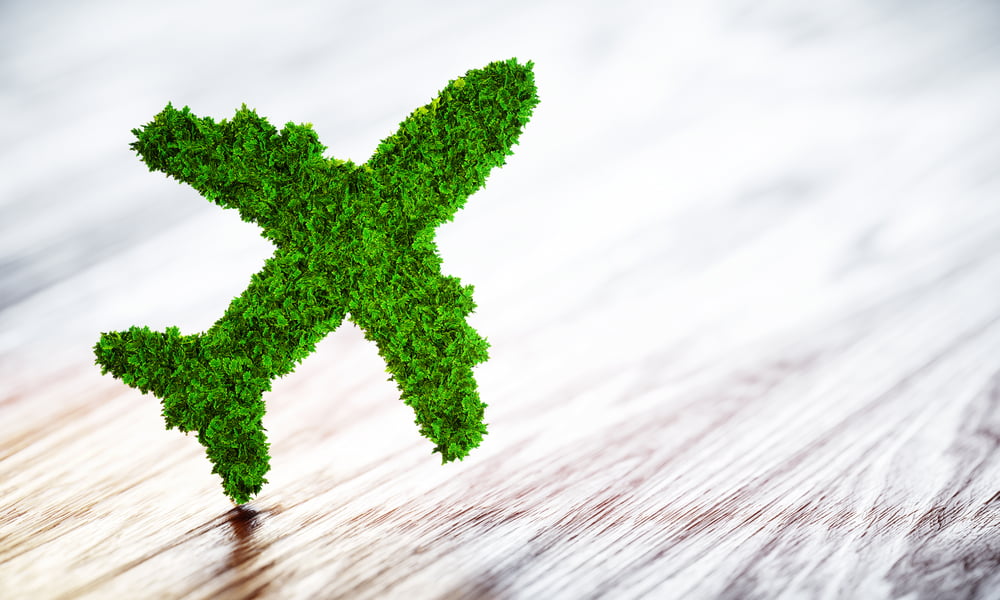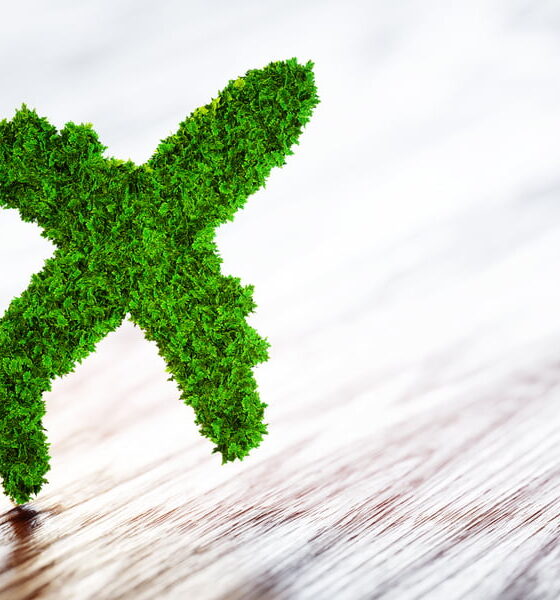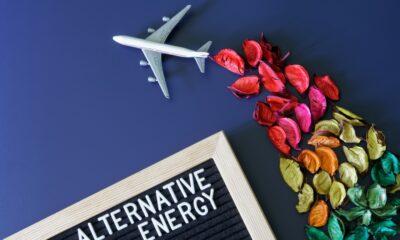

Features
Earn a Pilot’s License and Lower the Industry’s Carbon Footprint
Sustainability is becoming a growing concern is many industries and professions. The aviation industry is taking new measures to reduce its carbon footprint. As a result, more airlines are taking steps to help the planet.
Some pilots have decided to give up flying altogether to help save the planet. Euro News interviewed three of these pilots and called them heroes.
We have to disagree with this assertion. Pilots leaving the profession aren’t helping the planet, since they will inevitably be replaced by others.
Instead, we should be celebrating pilots that take the right steps to protect the planet, so the airlines attempts to help the planet don’t backfire.. The good news is that there are a number of things they can do to lower their carbon footprints.
Pilots Can Take Steps to Be More Sustainable
A growing number of pilots are expressing a desire to be eco-friendlier. This is one of the ways that airlines are becoming eco-friendlier. Some of the things that they can do are listed below:
- Use a de-rated takeoffs to minimize fuel with takeoffs
- Try to maintain cruising altitude as long as possible before descending to reduce fuel needs when landing
- Use linear holding to minimize circling needs before taking off to lower the carbon footprint at lower altitudes
As you can see, there are a lot of steps that pilots can take to lower their carbon footprint.
How Can You Enter the Profession as a Pilot to Help Reduce its Carbon Footprint?
You can do a lot to lower your carbon footprint as a pilot. However, you need to actually find a career as a pilot to help the environment in this way.
If you want to lower the carbon footprint of the aviation profession, you will need to get a job first. This is going to require you to get a commercial or private pilot license first.
Pilot license holder Michael Hsu recently discussed the requirements for getting a private pilot license (PPL). Aspiring eco-friendly pilots should follow these guidelines to get a job in the profession and lower the industry’s carbon footprint.
Michael Hsu achieved his private pilot license (PPL) in 2008. He understands the many requirements necessary to obtain the license and the benefits that come with it. If you want to be an eco-friendly pilot, then you should follow these guidelines.
What Is a Private Pilot License?
A Private Pilot License is also known as a PPL. It is the most popular form of pilot’s license to receive. The PPL serves a similar purpose to a driver’s license for those who drive vehicles. A person holding a private pilot license can legally fly a private aircraft alone.
Individuals seeking to fly ultralight air vehicles do not hold their PPL before operating.
Requirements for Receiving a Private Pilot License
The FAA implements numerous rules for achieving a PPL, varying based on the type of aircraft you prefer. Michael Hsu explained that someone seeking a PPL might aspire to fly a helicopter, airship, airplane, hot air balloon, glider, or another plane.
Age and Health
You must be 17 years old to apply for a private pilot license. Some medical concerns may prevent a person from completing the entire training program and ultimately receiving their PPL.
Common health concerns include the following:
High blood pressure: The individual must use medication
Asthma: Aspiring pilots with asthma may be required to take additional tests to prove that asthma will not affect their flying
Vision: Standard PPL requirements allow pilots to wear contact lenses or glasses
Hsu explained that an aeromedical examiner (AME) provides advice regarding health concerns and issues the medical certificate after a successful medical examination.
Necessary Pilot Certifications
To receive a PPL, the pilot must hold a sport pilot certificate, recreational pilot certificate, or a U.S. student pilot certificate.
They must also undergo flight training and logbook checks from an authorized flight instructor.
Aeronautical Experience
Michael Hsu stated that aeronautical experience is essential to receiving a PPL. The pilot must log at least 40 hours of flight time, including 20 hours of training from the authorized instructor. They must also complete ten solo flight hours.
Private Pilot Checkride
Hsu added that the pilot must also pass the FAA Practical Exam, commonly known as a check-ride. The pilot can only undergo the checkride after completing the required flight training.
An FAA examiner must administer the exam. It consists of oral and flight portions, and the pilot must pass the verbal part of the exam to proceed to the flight portion. Once both are complete, the pilot can complete FAA paperwork to receive a temporary PPL until the official document arrives.
Private Pilot Michael Hsu
Hsu has been a private pilot for more than a decade. He believes receiving his license was an experience that changed his life and continues to provide numerous benefits. Hsu also completed his instrument rating in 2010.
Take the Right Steps to Be an Eco-Friendly Pilot
Sustainability is becoming a greater concern than ever these days. The airline industry, in particular, is under growing pressure to reduce its carbon footprint. One of the ways that the industry will be eco-friendlier is by hiring and training eco-friendly pilots. You need to take the right steps to become a licensed pilot and then lower your carbon footprint as a result.


 Environment10 months ago
Environment10 months agoAre Polymer Banknotes: an Eco-Friendly Trend or a Groundswell?

 Environment11 months ago
Environment11 months agoEco-Friendly Home Improvements: Top 7 Upgrades for 2025

 Features9 months ago
Features9 months agoEco-Friendly Cryptocurrencies: Sustainable Investment Choices

 Features10 months ago
Features10 months agoEco-Friendly Crypto Traders Must Find the Right Exchange





























